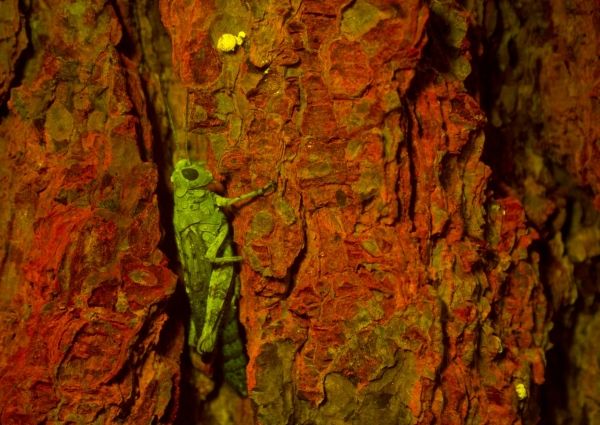A blue flashlight that makes corals shine in the sea can help with spotting insects in nighttime forests, according to a recent Texas A&M AgriLife study. The peer-reviewed study suggests that blue light could help with pest control, natural history research and night insect collecting.
The study grew out of a chance meeting at a conference between a vendor and a former student of Hojun Song, associate professor in the Department of Entomology at the Texas A&M University College of Agriculture and Life Sciences. The conference vendor was marine biologist Charles Mazel, co-founder of NIGHTSEA in Massachusetts. Mazel showed Song’s former graduate student Derek Woller some blue-light fluorescence photographs he had taken for fun of various caterpillars and grasshoppers.
Fast-forward about a year, and Woller convinced Song to purchase one of the blue lights to test in various lab projects. The reason the light piqued Woller’s curiosity is that some objects and animals can glow like beacons under intense blue light, a phenomenon called fluorescence. When the right wavelength of light hits certain materials, they emit light of a lower energy, or longer wavelength. The color and intensity of fluorescence depends on the material and the wavelength of light.
Continue reading at Texas A&M University
Image via Texas A&M University


